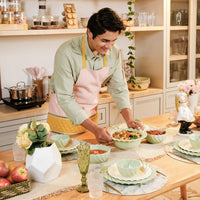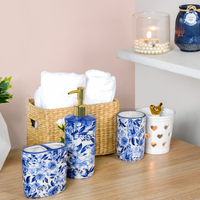If you have a liking for pastries and frequently order a pastry online you may have considered trying your hand at making your own at home. Taking up baking as a hobby can be intimidating at first, but that’s only natural since everything is still new to you. Moreover, there is also the irrational fear of messing things up on the first try, which you should not stress about too much since you have yet to gain some experience. That said, things are bound to go awry at some point if you ever dive straight into something without being prepared. So, to help you become ready to tackle your first-ever baking recipe, let’s find out some of the basic baking terms to know before you begin whipping out a treat!

1. Preheat
Preheating is a simple yet essential step to ensure whatever you’re baking comes out right. If you are following a recipe and it dictates that you must preheat something, typically in an oven, it essentially means that you must turn on the appliance and set it to the temperature indicated. You should preheat the oven for at least 15 minutes before placing anything inside it so that it has enough time to heat up to the desired temperature.

2. Grease
You are trying a recipe to bake a cake and the recipe says you have to “grease the pan”. Greasing means coating baking dishes or a baking sheet with either butter or oil, depending on the recipe’s instructions. The key thing about greasing is that it needs to be done thoroughly and should ideally include the entire surface area, especially in corners of baking pans where cakes tend to stick. Applying a light layer of grease is best done with a simple paper towel or a more specialised tool called a pastry brush.

3. Cream
Creaming is a fundamental baking method that thoroughly beats fat, often softened butter until the mixture becomes light and fluffy. This is typically done simultaneously with sugar to make an aerated mixture, resulting in cakes and other baked delights being lighter and fluffier. These two ingredients when mixed together make it easier to cream the butter and let the sugar partially or totally dissolve before adding other ingredients.

4. Beat
The method of beating means vigorously mixing the baking ingredients until thoroughly combined. This can be accomplished using any type of baking tool, such as a whisk or an electric mixer.

5. Fold
Folding is exactly what it sounds like placing a part of something on top of another. In the context of baking, the cut and folding gathers the ingredients from the bottom part of the bowl and places them on top via a mixing tool like a silicone spatula. This repetitive and gentle motion effectively blends two mixtures, with one typically being lighter than the other, to prevent the air inside it from escaping. The cut-and-fold method is practised in baking to make sure the batter does not become densely baked.

6. Knead
Kneading is usually associated with working the bread dough before baking. This baking method is performed to mix ingredients to create a cohesive dough as well as build and strengthen it. Kneading with your hands is often enough, but you can also use a dough hook on an electric stand mixer.

7. Whisk
Whisking requires the tool that shares its name with – a whisk. Whisking means stirring or beating ingredients together with a whisk to incorporate air into the final mixture and is usually used to whip egg whites into stiff or soft peaks.

8. Sift
Sifting is done to sort through the bigger particles of ingredients and separate the grains, i.e. removing the lumps from the loose particles to create a smooth dough or batter. Sifting dry ingredients requires baking tools such as sifters or sieves with a fine mesh lining.

9. Caramelise
The method of caramelising refers to the heating of sugar until it is melted and brown. Caramelising sugar gives it a distinctive flavour. Caramel is generally used as a filling of cake or for decorative purposes of cakes and pastries.

10. Double boiler
Double boiling involves placing a bowl or pan over (but not touching) simmering water or where a ramekin or tin is placed in a tray filled with boiled water for further cooking. It’s often used for melting chocolate and cooking with gentle and even heat on the stovetop or in the oven.

Conclusion
If you are new to the baking world and do not know the hows and whats of it, then you may find yourself scratching your head when reading these baking terms for the first time. Thus, to ensure that your first baked treat comes out as you expect, it is best to familiarise yourself with these methods, and the common mistakes beginners make. The above-listed baking terms are some of the many and are used more often. We hope you found this baking glossary useful. We can’t wait for you to try your hands at baking your first treat and have done that successfully.
If you want to show off your baking skills to your friends and family, don't forget to check out our collection of cake stands and dessert plates that are perfect for showcasing your baked creations.




















